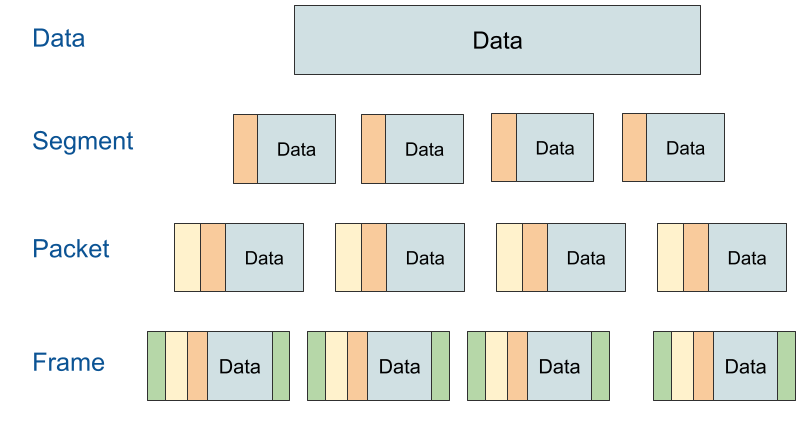Data
Data
When data is requested by a user or posted from a form, the raw data must first be prepared by the application. This may involved encoding and encrypting the data at this level, especially if end-to-end encryption has been used.
Segments
Segments
Transport Layer (Layer 4 of the OSI model)
Segmentation is the process of breaking down data from the higher layers (e.g., application layer) into smaller, manageable units for transmission. These smaller units are called segments.
In TCP (Transmission Control Protocol), data is divided into segments before being sent over the network. These segments contain sequence numbers and other control information.
Packets
Packets
Network Layer (Layer 3 of the OSI model)
Packets are the data units used for communication between devices in a network. The network layer is responsible for routing packets from the source to the destination. Packets contain not only the data but also network layer addressing information.
In IP (Internet Protocol) networks, data is encapsulated into packets. Each packet includes the source and destination IP addresses and other information for routing.
Frames
Frames
Data Link Layer (Layer 2 of the OSI model)
Frames are the data units used for communication within a local network segment. The data link layer is responsible for controlling access to the physical medium (e.g., Ethernet or Wi-Fi) and ensuring reliable transmission within a local network.
In Ethernet networks, data is formatted into frames. Each frame includes source and destination MAC addresses, frame delimiters, and error-checking information like CRC (Cyclic Redundancy Check).
Resources



